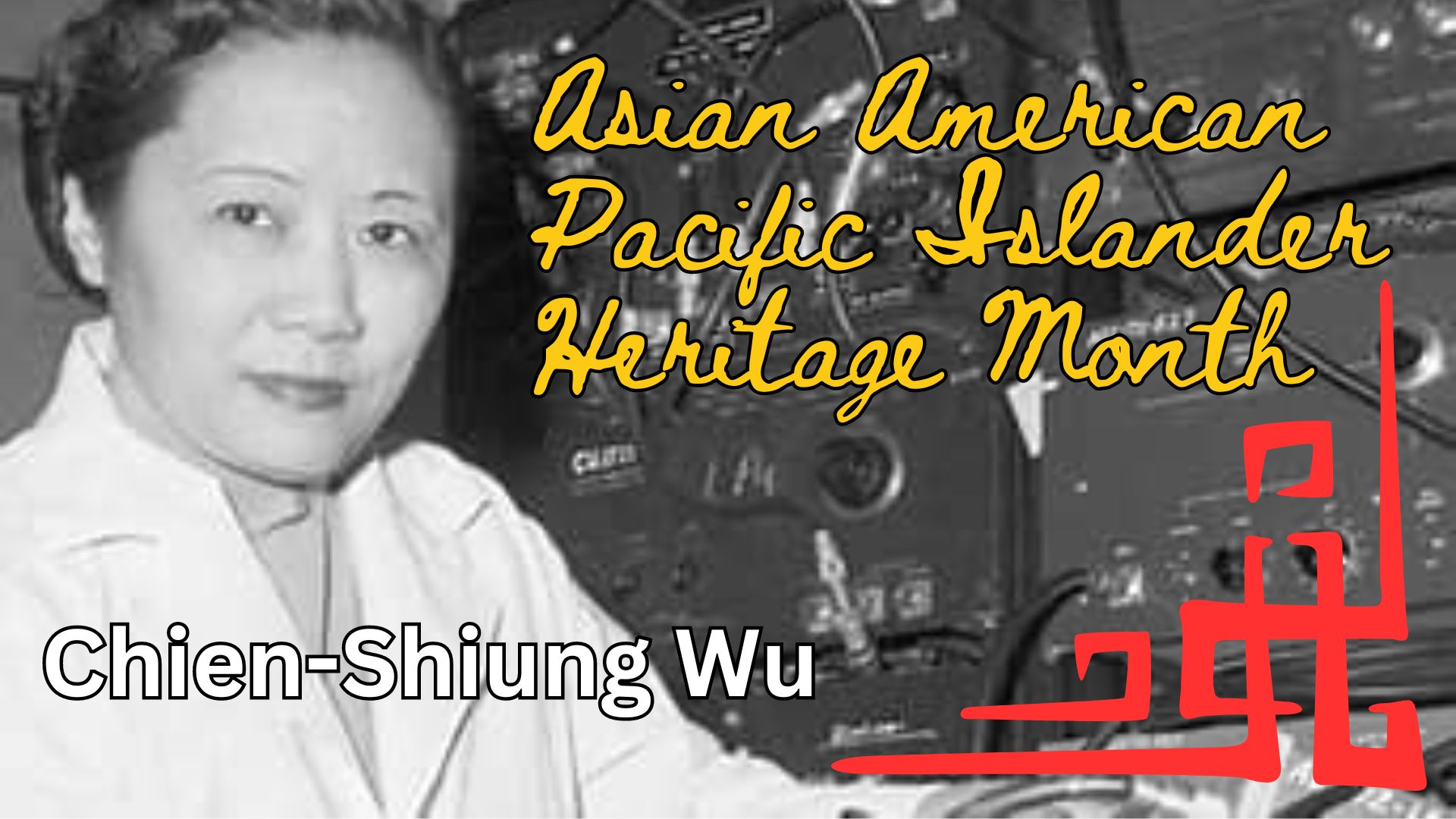May is Asian American Pacific Islander Heritage Month. Chien-Shiung Wu was a Chinese-American particle and experimental physicist who made significant contributions in the fields of nuclear and particle physics. Wu worked on the Manhattan Project, where she helped develop the process for separating uranium into uranium-235 and uranium-238 isotopes by gaseous diffusion.
Dr. Wu was born in 1912 near Shanghai the same year as the founding of the Republic of China. Her mother, Funhua Fan, was a teacher and her father, Zhong-Yi Wu, was an intellectual and engineer. Wu and her father encouraged her to pursue her education as far as she could Wu’s father opened a school that she attended as a young girl until she went to boarding school.
Most known for her work on the top-secret Manhattan Project during World War II and her Cobalt-60 experiment, the Wu experiment, that contested the law of conservation of parity (which holds that the mirror images of two physical interactions are the same).
Parity is the idea that the current world and one built like its mirror image would behave in the same way, with the only difference that left and right would be reversed (for example, a clock which spins clockwise would spin counterclockwise if a mirrored version of it were built).
The violation of parity in weak interactions was a principle theorized by Dr. Wu’s colleagues , theoretical physicists Tsung-Dao Lee and Chen-Ning Yang who won the 1957 Nobel Prize in Physics, while Wu herself waited twenty-one years before she was awarded the inaugural Wolf Prize in Physics in 1978. Dr. Wu’s pioneering work is regarded as a standard among physicists today.
Her expertise in experimental physics evoked comparisons to Marie Curie. Her nicknames include the “First Lady of Physics”, the “Chinese Madame Curie”, Madam Wu, and the “Queen of Nuclear Research”.

